Bio from the Web site:
The radical notion that women like good movies
Bio from the Web site:
Incendies: Lebanon Is Scorched, Burned and Blistered
 |
| A cinematic moment. The image comes first and the explanation comes much much later. |
 |
| Violence and pain become sources of empathy and identification for the audience. |
 |
| The now classic diasporic subject returning to the ‘homeland’ and looking. |
 |
| The protagonist is played by Lubna Azabal, a Moroccan actress who is a contender to be the next generation Hiam Abbas. Hiam Abbas is the Arab world’s Meryl Streep. |
Just after the death of her newly-born sister, Chanda, 12 years old, learns of a rumor that spreads like wildfire through her small, dust-ridden village near Johannesburg. It destroys her family and forces her mother to flee. Sensing that the gossip stems from prejudice and superstition, Chanda leaves home and school in search of her mother and the truth. Life, Above All is an emotional and universal drama about a young girl (stunningly performed by first-time-actress Khomotso Manyaka) who fights the fear and shame that have poisoned her community … Directed by South African filmmaker Oliver Schmitz (Mapantsula), it is based on the international award winning novel Chanda’s Secrets by Allan Stratton.
By Liz Braun:
Life, Above All is an historical snapshot of the AIDS crisis in Africa and an indictment of sorts of the government bungling that allowed the epidemic to overwhelm South Africa. The culprits (ignorance, poverty, big pharma, religious and political leaders, etc.) are not so much the focus; the point of this quiet, heartbreaking drama is all those children left to cope, especially the orphans.
By Nora Lee Mandel:
Rather than focusing on the usual corrective lessons on the transmission and treatment of HIV/AIDS, the family’s struggles play out within systems of traditional care and limited modern medical facilities that are strained to the breaking point. Chanda rails against the stoic comforts of religion and receives only discouraging advice at an overcrowded clinic. Her illiterate and exhausted mother falls prey to the greed of a charlatan doctor, a demon exorcism, and horrific neglect by her revengeful sister, who has not forgiven Lillian for her flouting of tribal marriage traditions for the sake of love.
By Manohla Dargis:
Chanda’s silence is unnerving, as is the absence of tears, and while her calm conveys a preternatural strength of character it also suggests a lifetime of pain. No child, you think, should have to pick out her baby sister’s coffin. But she does, taking in the horror of the funeral home and its metal table without flinching and then pushing forward, still dry eyed, still determined, taking on life with an appealing (and enviable) toughness and grace that make this difficult story not just bearable but also absorbing. As the weight of the world bears down on her slender frame, she becomes the movie’s moral compass and its authentic wonder: the child who is forced to be an adult yet remains childlike enough to feel real.
By Mary Corliss:
Two years ago, a drama with a seemingly forbidding subject — an illiterate teenage girl, pregnant with her father’s child and hellishly abused by her drug-addicted mother — won over critics, audiences and the members of the Academy of Motion Picture Arts and Sciences. The film was Precious. Now comes Life, Above All, which deals with the tragedy of AIDS in South Africa, as seen by a 12-year-old girl named Chanda. At the end of its world premiere at last year’s Cannes Film Festival, critics cheered like schoolkids, giving it a 10-minute standing ovation.
By Alison Willmore:
… when its focus narrows onto Manyaka and her mother (Lerato Mvelase), their deep mutual affection and the terrifying sacrifices they’re ready to make because of it, the film sings, becoming a moving tribute to love holding fast against suffering. The ending, which offers a hint of relief, is unfiltered, frankly unbelievable melodrama, but something grimmer and more measured would be intolerable after everything that comes before.
 |
| Directed by Dorothy Arzner by Judith Mayne |
In the early to mid-1970s, when Arzner’s work was brought to the attention of feminists, her films were deemed particularly important for their criticism of Hollywood films “from within.” Pam Cook and Claire Johnston described how the universe of the male was “made strange” in Arzner’s films, how women’s “rewriting” of male discourse subverted the established conventions of Hollywood. At the time Cook and Johnston’s essays were published, film theory was very much preoccupied with the notion of “making strange,” with the possibilities of a Hollywood film that critiqued itself and its own assumptions. Cook and Johnston brought a strong theoretical approach to Arzner’s work, while other critics of the era were simply delighted to find a woman director among all of the men in Hollywood film history.
The plot of Dance, Girl, Dance concerns the differing paths to success for Bubbles (Lucille Ball) and Judy (Maureen O’Hara), both members of a dance troupe led by Madame Basilova (Maria Ouspenskaya). The dance troupe performs vaudeville-style numbers in bars and nightclubs, much to the chagrin of Basilova (who bemoans her status as a “flesh peddler”). Bubbles has “oomph,” a kind of dancer’s version of “it,” and eventually she leaves the troupe and enthusiastically pursues a career as “Tiger Lily White.” Judy, in contrast, is a serious student of ballet, and the protegee of Basilova. However, it is Bubbles who gets the jobs, and she arranges for Judy to be hired as her “stooge,” i.e., as a classical dancer who performs in the middle of Bubble’s act, and thus primes the audience to demand more of Bubbles.
Toward the end of the film, Judy stands on stage and refuses her role as stooge. She defiantly crosses her arms and moves closer to the audience, and she gives the spectators a piece of her mind:
Go ahead and stare. I’m not ashamed. Go on. Laugh! Get your money’s worth. Nobody’s going to hurt you. I know you want me to tear my clothes off so’s you can look your fifty cents worth. Fifty cents for the privilege of staring at a girl the way your wives won’t let you. What do you suppose we think of you up here–with your silly smirks your mothers would be ashamed of? And we know it’s the thing of the moment for the dress suits to come and laugh at us too. We’d laugh right back at the lot of you, only we’re paid to let you sit there and roll your eyes and make your screamingly clever remarks. What’s it for? So’s you can go home when the show’s over and strut before your wives and sweethearts and play at being the stronger sex for a minute? I’m sure they see through you just like we do.
I see Judy’s confrontation less as a challenge to the very notion of woman as object of spectacle than as the creation of another kind of performance. Oftentimes the scene is discussed as if the audience were exclusively male, which it is not, even though Judy addresses men in her speech. When the camera pans the reactions of the audience to Judy’s speech, the responses of women are quite clearly visible. Women squirm uncomfortably in their seats just as surely as men do, and when release occurs in the form of applause, it is a woman–Steven Adams’s trusty secretary–who initiates it. Arzner’s view of performance and her view of the relationship between subject and object were never absolute; women may be objectified through performance, but they are also empowered; men may consume women through the look, but women also watch and take pleasure in the spectacle of other women’s performance.
Thoughts?
This guest post by Renee Martin also appears at her blog Women’s Eye on Media.
Many of the male stars like, Morris Chestnut and Taye Diggs are dark skinned Black men. In fact, you could reasonably argue that Morris Chestnut is the king of the African Romantic comedy. These dark skinned men are always described as fiiiine, hot, and a real catch. When it comes to colourism and Black men, it would be fair to say that it is not an issue in African American comedies, because the actors range from Morris Chestnut to the ever so lovely LL Cool J (and yes, I love him).
The same is not necessarily true when it comes to women. From Stacey Dash in VHI’s new series Single Ladies, to Paula Patton in 2011’s Jumping the Broom, to Sanaa Lathan in The Best Man, to Zoe Saldana in Guess Who, to Vivica Fox in Two Can Play That Game, and Queen Latifah in Just Wright, light skinned women have a tendency to dominate the genre. The darkest skinned women that you will find in the genre are Monique, who played the ghetto woman Two Can Play That Game, Kimberly Elise, who played Helen in Diary of a Mad Black Woman (the title says it all doesn’t it), and Gabrielle Union, who starred in Deliver Us From Eva.
What is perhaps most interesting, is that in Deliver Us From Eva, Union played the stereotypical angry Black woman who had been burned countless times. She was absolutely vicious to anyone that approached her, and her brother in laws absolutely detested her, that is until they paid LL. Cool J to date her, and suddenly she became soft, and loving. Here we go again with another Black woman being saved from her angry ways by the love of a good Black man. (Tyler Perry is somewhere dancing a little jig.) All the things that allowed her to support her sisters up to and including putting them through school, and saving money for the benefit of their family, were seen as negative character traits. When Union played opposite Vivica Fox in Two Can Play That Game, she played the role of Jezebel. That’s right, a dark Black woman out to steal away Morris Chestnut from the light skinned, smart, and in control Vivica Fox. Union was slut shamed throughout the movie, and yet when Vivica Fox chose to sleep with Chestnut in his office it was simply being freaky and keeping your man happy. Particularly telling, is that no reference was made to differentiate between the two women, except for the visually obvious difference in hue. Why one was necessarily deserving of being slut shamed, when she was essentially no different than the other, was left for the viewer to determine. Even in movies, the strong dark skinned Black woman can never get a break.
In Jungle Fever, Wesley Snipes leaves his light skinned Black wife played by Lonette McKee, for an Italian woman. In a scene with McKee’s girlfriends, they discuss how the trend for a long time was for Black men to seek out light bright and damn near White women as partners, and how that changed as inter racial relationships became acceptable. You see, the White woman has always been held up as the epitome of beauty, and failing that, the WOC who was closest in appearance to Whiteness was then the chosen prize, thereby leaving dark skinned women completely out of the loop. A new documentary entitled Dark Skin being released this fall discusses this issue. If you doubt that this is an issue, a simple look at what L’Oreal Feria haircolor did to Beyonce, or what Elle Magazine did to Gabourey Sidibe is more than enough to settle this issue.
No woman of colour can ever be light skinned enough. What is particularly disgusting, is not only do these movies have all Black casts, in quite a few instances, they have Black directors to boot. What does it say about Black cinema, that we constantly reproduce our internalized racial hatred? Since we know that colorism is an issue for the entire community, why is it that, Black women are particularly targeted with erasure? Watching these movies really brought to mind the conversations in media about the lonely Black woman, who is destined to die a single woman. As much as African American romantic comedies constantly end with a Black woman and a Black men either in a committed relationship, or getting married, the near erasure of dark skinned women plays into the whole idea that unless you are light skinned you are not worthy of being loved. When we add in the fact that these movies are not aimed at White people, it seems to me that Blacks have come to find this idea acceptable, otherwise when given the opportunity to tell our stories, darker Black women would appear in this genre more regularly, rather than being restricted to films like The Color Purple and Precious.
Editors Note: This is an ongoing series. You can find part 1 here on class. Next week, we will be looking at the ubiquitous usage of the word nigger in these movies.
Rachel Maddow Reviews ERA History from Gender Focus
July Movies I Won’t Be Seeing (And One I Will) from The Funny Feminist
Pop Pedestal: Captain Turanga Leela from Bitch Magazine
Help Expose the Real Illusionists from Adios Barbie
The Idiot Box Goes Back to the Future from The New Agenda
Great Sites About Women in the Media I Had to Share from BlogHer
Talk to John Carpenter on Twitter on Friday, July 8th from Flick Filosopher
Feminist Booster Club: Help a Native Filmmaker Finish Her Doc on LaDonna Harris from Ms. Magazine
Pissed Off in a Huge Way from FBomb
HBO, You’re Busted from the Los Angeles Times
Leave your links!
1. Angelina Jolie: $27 million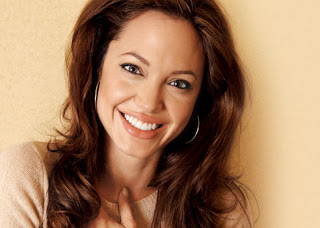
1 Oscar win, 2 Oscar nominations
2. Jennifer Aniston: $25 million
0 Oscar wins, 0 Oscar nominations
2 Oscar wins, 15 Oscar nominations
4. Sarah Jessica Parker: $23 million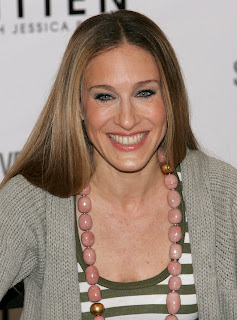
0 Oscar wins, 0 Oscar nominations
0 Oscar wins, 0 Oscar nominations
6. Sandra Bullock (tie): $15 million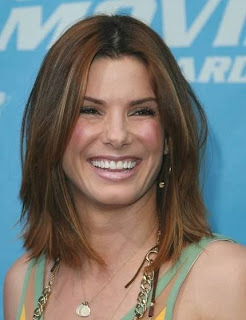
0 Oscar wins, 0 Oscar nominations
7. Reese Witherspoon (tie): $15 million
1 Oscar win, 1 Oscar nomination
8. Nicole Kidman (tie): $12 million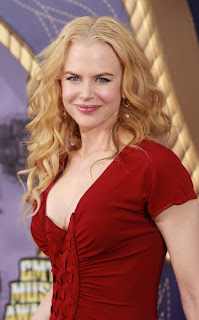
1 Oscar win, 2 Oscar nominations
9. Drew Barrymore (tie): $12 million
0 Oscar wins, 0 Oscar nominations
10. Renee Zellweger: $10 million
1 Oscar win, 3 Oscar nominations
11. Cate Blanchett: $8 million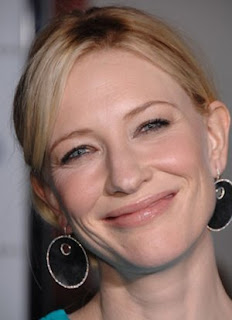
1 Oscar win, 4 Oscar nominations
12. Anne Hathaway (tie): $7 million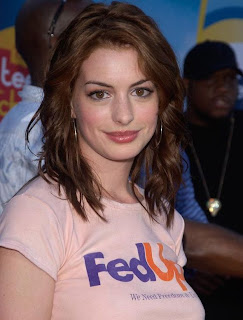
0 Oscar wins, 1 Oscar nomination
13. Halle Berry (tie): $7 million
1 Oscar win, 1 Oscar nomination
14. Scarlett Johansson: $5.5 million
0 Oscar wins, 0 Oscar nominations
1 Oscar win, 6 Oscar nominations
Total Amount of Money Earned: $212.5 million
Total Number of Oscar Nominations: 35
Total Number of Oscar Wins: 9
***************************************************************
And, just for kicks, here’s the Forbes list of the 15 Top-Earning Actors:
1. Harrison Ford: $65 million
(0 Oscar wins, 1 Oscar nomination)
2. Adam Sandler: $55 million
(0 Oscar wins, 0 Oscar nominations)
3. Will Smith: $45 million
(0 Oscar wins, 2 Oscar nominations)
4. Eddie Murphy (tie): $40 million
(0 Oscar wins, 1 Oscar nomination)
5. Nicolas Cage (tie): $40 million
(1 Oscar win, 2 Oscar nominations)
6. Tom Hanks: $35 million
(2 Oscar wins, 5 Oscar nominations)
7. Tom Cruise: $30 million
(0 Oscar wins, 3 Oscar nominations)
8. Jim Carrey (tie): $28 million
(0 Oscar wins, 0 Oscar nominations)
9. Brad Pitt (tie): $28 million
(0 Oscar wins, 2 Oscar nominations)
10. Johnny Depp: $27 million
(0 Oscar wins, 3 Oscar nominations)
11. George Clooney: $25 million
(for acting: 1 Oscar win, 2 Oscar nominations)
12. Russell Crowe (tie): $20 million
(1 Oscar win, 3 Oscar nominations)
13. Robert Downey Jr. (tie): $20 million
(0 Oscar wins, 2 Oscar nominations)
14. Denzel Washington (tie): $20 million
(2 Oscar wins, 5 Oscar nominations)
15. Vince Vaughn: $14 million
(0 Oscar wins, 0 Oscar nominations)
Total Amount of Money Earned: $492 million
Total Number of Oscar Nominations: 31
Total Number of Oscar Wins: 7
***************************************************************
Actresses
1. Angelina Jolie: Kung Fu Panda
Box Office: $215,395,021
RT Rating: 89%
2. Jennifer Aniston: Marley & Me
Box Office: $143,084,510
RT Rating: 61%
3. Meryl Streep: Mamma Mia!
Box Office: $143,704,210
RT Rating: 53%
4. Sarah Jessica Parker: Sex and the City
Box Office: $152,595,674
RT Rating: 50%
5. Cameron Diaz: What Happens in Vegas
Box Office: $80,199,843
RT Rating: 27%
Total Box Office Gross: $734,979,258
Average RT Rating: 56%
Actors
1. Harrison Ford: Indiana Jones … Crystal Skull
Box Office: $316,957,122
RT Rating: 76%
2. Adam Sandler: Bedtime Stories
Box Office: $109,993,847
RT Rating: 23%
3. Will Smith: Hancock
Box Office: $227,946,274
RT Rating: 39%
4. Eddie Murphy: Meet Dave
Box Office: $11,644,832
RT Rating: 19%
5. Nicolas Cage: Knowing
Box Office: $79,911,877
RT Rating: 32%
Total Box Office Gross: $746,453,952
Average RT Rating: 38%
***************************************************************
As you work toward developing this film, and if you’re at all interested in breaking some new ground by portraying real women on-screen (rather than the conventional stereotypes of women we’ve gotten so used to seeing) please be advised of the following:
1. Do not cast Jessica Alba, Megan Fox, Katherine Heigl, and Anna Faris, and then parade them around in giant heels, wearing some semblance of revealing business suit-esque attire, probably involving excessive cleavage and certainly showcasing thirty gratuitous inches of bare leg.
11. Do not turn this into Sex and the City Takes a Business Trip, even though that’s undoubtedly what everyone will encourage you to do.
Good luck!
The Racial Politics of X-Men from Race-Talk
Human Rights Watch International Film Festival: The Price of Sex–directed by Mimi Chakarova from Women and Hollywood
Movie Review: Polytechnique, A Fictional Killer of Women Who Is All Too Familiar from the New York Times
8 Real Women Who Deserve Their Own Action Movies from The Mary Sue
Thelma & Louise Would Blush from the Globe and Mail
Bridesmaids Buries Hollywood’s Fear of Feminism from the Guardian UK
[Trigger warning for rape “humor,” fat hatred, sexual assault, violence.]
Deeky texted me last night after he saw a new TV spot for the previously discussed upcoming film Horrible Bosses, in which murder and sexual assault are central “comedic” themes. This spot ran during a primetime re-run of NCIS.
“Tool Boss” Colin Farrell tells “Disrespected Employee” Jason Sudeikis, “We’ve got to trim some of the fat around here.” Sudeikis says, “What?!” to which Farrell replies, “I want you to fire the fat people.”“Maneater Boss” Jennifer Aniston, who is a dentist, suggests to “Harassed Employee” Charlie Day that they have sex on top of an unconscious female patient. “Let’s use her like a bed,” she says, to which Day exclaims in response, “That’s crossing the line!”
“Psycho Boss” Kevin Spacey tells “Abused Employee” Jason Bateman, “I own you, you little runt,” to which Bateman sheepishly replies, “Thank you.”
At a bar, with “murder consultant” Jaime Foxx, one of them says, “I guess we’re just gonna be miserable for the rest of our lives,” and Foxx offers, “Why don’t you kill each other’s bosses?” Sudeikis says, “That’s actually a good idea.”
Montage of someone flying out the window of a highrise building; the three men in a car spinning out of control; police cars with sirens blaring.
Cut to Sudeikis and Bateman walking down the street together, evidently discussing the murder plan. “I can’t go to jail,” Sudeikis says. “Look at me, I’ll get raped like crazy.”
“I’d get raped just as much as you would, Kurt,” says Bateman, in a sort of hurt voice because rape is totes a compliment.
“No, no—I know you would,” Sudeikis reassures him.
And, no, the fact that it is a prison rape joke between men does not make it funny. There is nothing funny about prison rape.
 Call Time Warner and let them know that you don’t think rape jokes, especially rape jokes that suggest rape is a fucking compliment, are funny.
Call Time Warner and let them know that you don’t think rape jokes, especially rape jokes that suggest rape is a fucking compliment, are funny.
If you’re on Twitter, you can tweet directly at Warner Brothers Pictures: @WBPictures.
Melissa McEwan is the founder and manager of the award-winning political and cultural group blog Shakesville, which she launched as Shakespeare’s Sister in October 2004 because George Bush was pissing her off. In addition to running Shakesville, she also contributes to The Guardian‘s Comment is Free America and AlterNet. Melissa graduated from Loyola University Chicago with degrees in Sociology and Cultural Anthropology, with an emphasis on the political marginalization of gender-based groups. An active feminist and LGBTQI advocate, she has worked as a concept development and brand consultant and now writes full-time.
Naturally, Harold and Kumar are accused of working together as a “North Korea and Al Qaeda alliance,” and they get shipped off to Guantanamo Bay. All this happens within the first 15 minutes of the film, and by the 20-minute mark, they’ve already escaped Guantanamo. The rest of the film follows their wandering across the United States, looking for a way to prove to the paranoid government that they aren’t, in fact, terrorists.
Because the first film was such an unexpected surprise in its intelligent dissection of both racial stereotypes and stoner culture (ha, seriously), I was excited about seeing the sequel. Unfortunately after sitting through most of the movie feeling somewhat uncomfortable, I left the theater entirely enraged.
 To say this film is misogynistic is an understatement. What most upset me wasn’t merely that women were unnecessarily objectified (I can’t remember the last time I saw so much gratuitous nudity), or that women were basically one-dimensional morons (and were given some of the most ridiculous dialogue I’ve heard in awhile, which is saying a lot in the age of Judd Apatow).
To say this film is misogynistic is an understatement. What most upset me wasn’t merely that women were unnecessarily objectified (I can’t remember the last time I saw so much gratuitous nudity), or that women were basically one-dimensional morons (and were given some of the most ridiculous dialogue I’ve heard in awhile, which is saying a lot in the age of Judd Apatow).
What bothered me most was that I couldn’t help but laugh at and appreciate the subversive way the film deals with race; the writers manage to satirize traditional perceptions of racial groups by using stereotypes to reveal the ridiculousness of racial stereotypes (yeah, I just defined satire), but for some reason, the writers couldn’t manage to treat traditional stereotypes of women with the same care.
While the audience laughs with the characters when race is addressed (when an old white woman on a plane stares at Kumar in fear, he morphs into a terrorist right before her eyes, complete with full beard and turban), the audience laughs at the female “characters” (like when two prostitutes, confronted with the question, “Have you found the love of your life?” get all ditzy and say, “No, we’re whores!”). Welcome to the films of the millennium: if we’re talking about race, forget about gender (see also Black Snake Moan, Hustle & Flow, maybe even Borat).
Two of the more extreme examples of sexism in the movie are scenes involving gratuitous female nudity (“the bottomless party”) and clichéd portrayals of prostitutes in a brothel.
The Bottomless Party
You know you’re in for a real treat when Harold and Kumar show up at a pool party where all the women walk around completely naked—oh, except for their tops. When they enter their friend’s mansion, in hopes of getting some help in avoiding Guantanamo again (they’ve escaped by now), they’re confronted with an array of tanned women’s asses and barely-there pubic hair, and whose mouths are wide open. In similar reaction, the group of men sitting next to me in the theater couldn’t stop making comments (“yeah man, hit that, daaaaaamn, that’s what I’m talkin’ about”), and this scene lasted at least seven hours from my perspective.
My favorite part of the scene was when one of the women started to take her top off, and the host responded with something along the lines of, “What the hell do you think you’re doing? Put your top back on; I don’t know what kind of party you think this is … ” Of course, she rolled her eyes as if to say “silly me” and apologized while covering her breasts. The audience got a terrible kick out of that. Because, if you didn’t know, it’s hilarious to watch women walk around naked while men tell them what they can and can’t do with their bodies. Sure, in the final moments of the scene, Harold and Kumar pull down their pants, but then the camera cuts away. What, no cock-shot?
The Brothel
Neil Patrick Harris is gay in real life, so I’m still coming to terms with Neil Patrick Harris supposedly playing himself, when what he’s really doing is playing 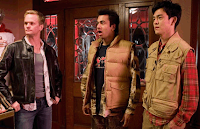 a heterosexual, drug-addicted character named Neil Patrick Harris. Regardless. Neil insists on taking Harold and Kumar to a brothel to get [insert several degrading comments about screwing women here]. Harold refuses, instead choosing to sit with a group of prostitutes, who he then complains to about his devolving friendship with Harold, while the prostitutes console him. (It’s unfortunate here that the writers rely so heavily on conventional clichés regarding “the hooker with a heart of gold” stereotype and the mother/whore fantasy.) Kumar, of course, takes two prostitutes into a room, while Neil goes through several choices before deciding on the one with the biggest breasts.
a heterosexual, drug-addicted character named Neil Patrick Harris. Regardless. Neil insists on taking Harold and Kumar to a brothel to get [insert several degrading comments about screwing women here]. Harold refuses, instead choosing to sit with a group of prostitutes, who he then complains to about his devolving friendship with Harold, while the prostitutes console him. (It’s unfortunate here that the writers rely so heavily on conventional clichés regarding “the hooker with a heart of gold” stereotype and the mother/whore fantasy.) Kumar, of course, takes two prostitutes into a room, while Neil goes through several choices before deciding on the one with the biggest breasts.
Kumar gets his girls to make out with each other, but then bursts into tears about his ex-girlfriend marrying some government-employed douchebag. So we’ve got two naked women sitting on either side of him, consoling him, helping him feel better about himself just after they’ve made out with each other—what more could a guy want? Is it just me, a feminazi audience member, who’s expecting too much? Maybe I’m over-analyzing. Maybe this is funny. They’re just whores after all. And Neil reminds us ever-so-subtly by literally branding his giant-breasted whore’s ass.
Throughout the film, the audience can’t help but be positioned as a collective participant in this sexism, and while I appreciated the intelligent discussion of post-9/11 race relations, I couldn’t 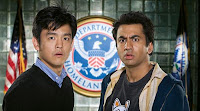 help but hate the film’s mistreatment of women. The writers had many opportunities to complicate gender issues, and yet, as always seems to be the case in films geared toward male audiences, they chose to exploit the women instead, turning them into nothing but naked body parts; their only importance is the fulfillment of male desires. I hated that. And I hated how, when I got up to leave the theater, the group of men sitting next to me talked about needing to wait out their hard-ons before they could stand up to leave.
help but hate the film’s mistreatment of women. The writers had many opportunities to complicate gender issues, and yet, as always seems to be the case in films geared toward male audiences, they chose to exploit the women instead, turning them into nothing but naked body parts; their only importance is the fulfillment of male desires. I hated that. And I hated how, when I got up to leave the theater, the group of men sitting next to me talked about needing to wait out their hard-ons before they could stand up to leave.
From her website:
Jean Kilbourne, Ed.D. is internationally recognized for her pioneering work on the image of women in advertising and her critical studies of alcohol and tobacco advertising. Her films, lectures, and television appearances have been seen by millions of people throughout the world. She was named by The New York Times Magazine as one of the three most popular speakers on college campuses. She is the author of the award-winning book Can’t Buy My Love: How Advertising Changes the Way We Think and Feel and co-author of So Sexy So Soon: The New Sexualized Childhood and What Parents Can Do to Protect Their Kids. The prize-winning films based on her lectures include Killing Us Softly, Spin the Bottle, and Slim Hopes.